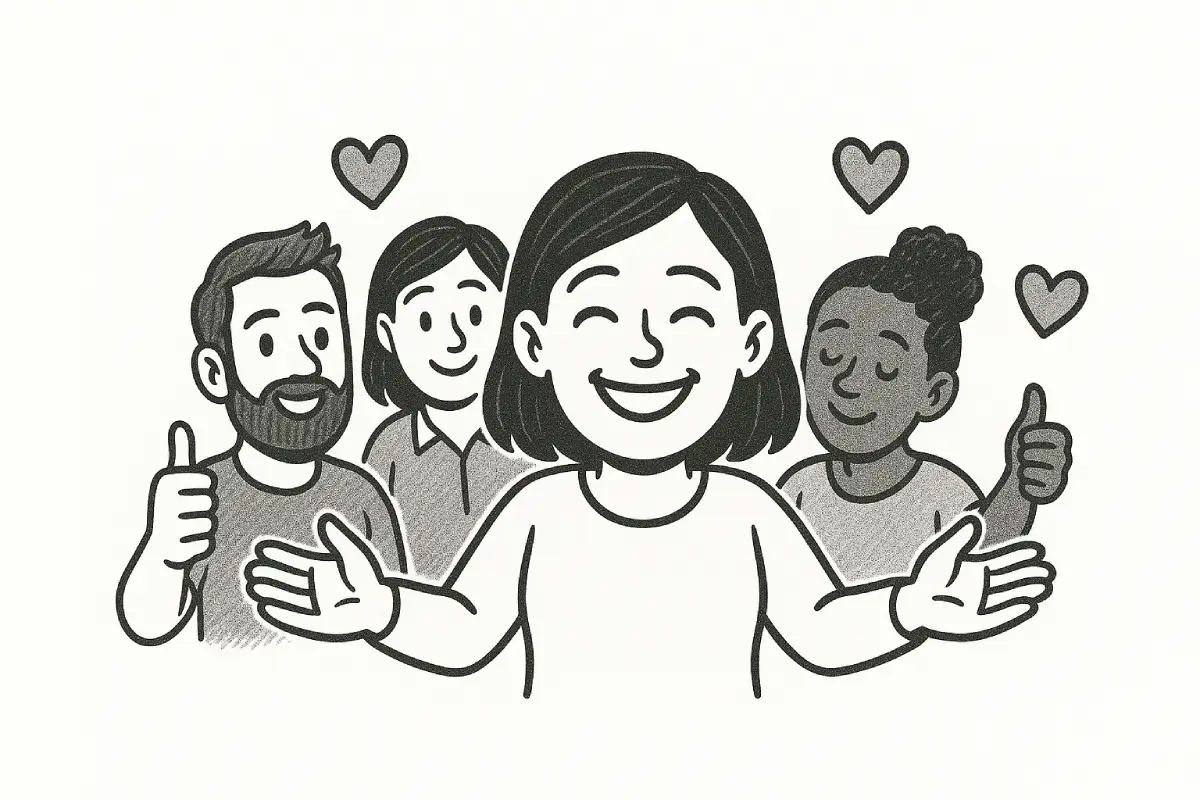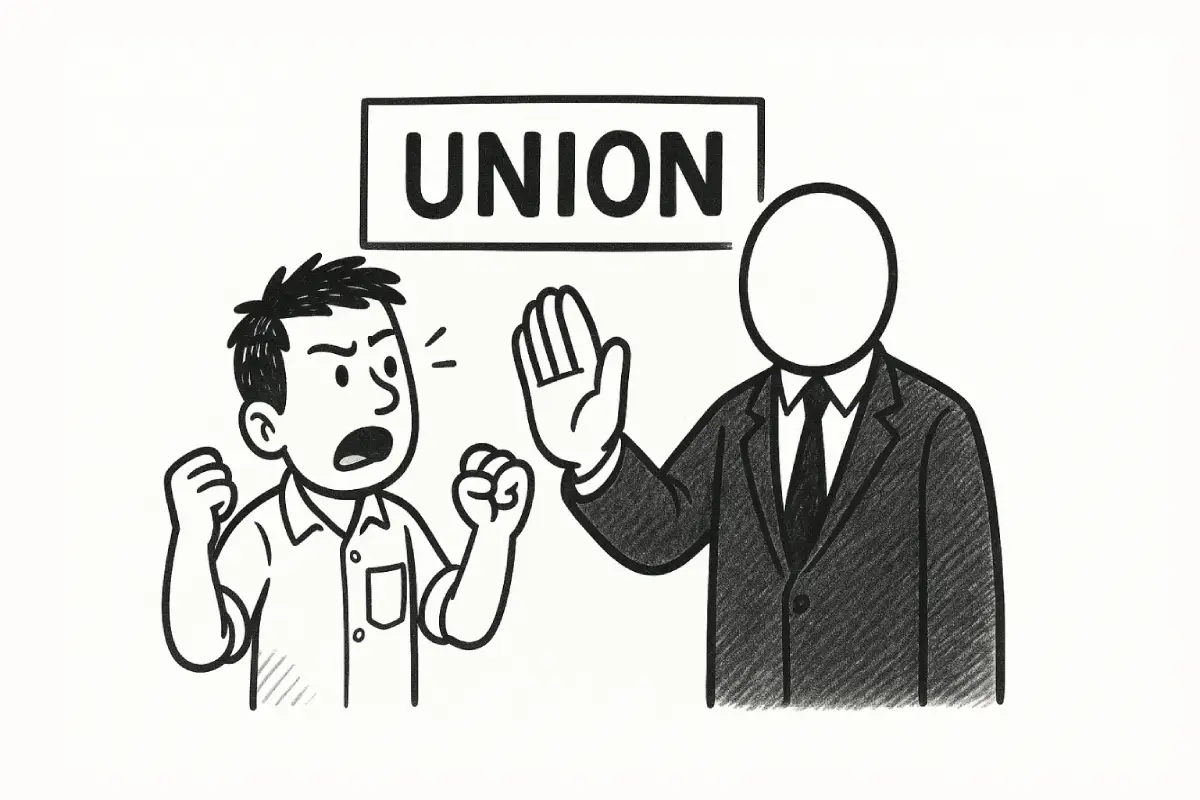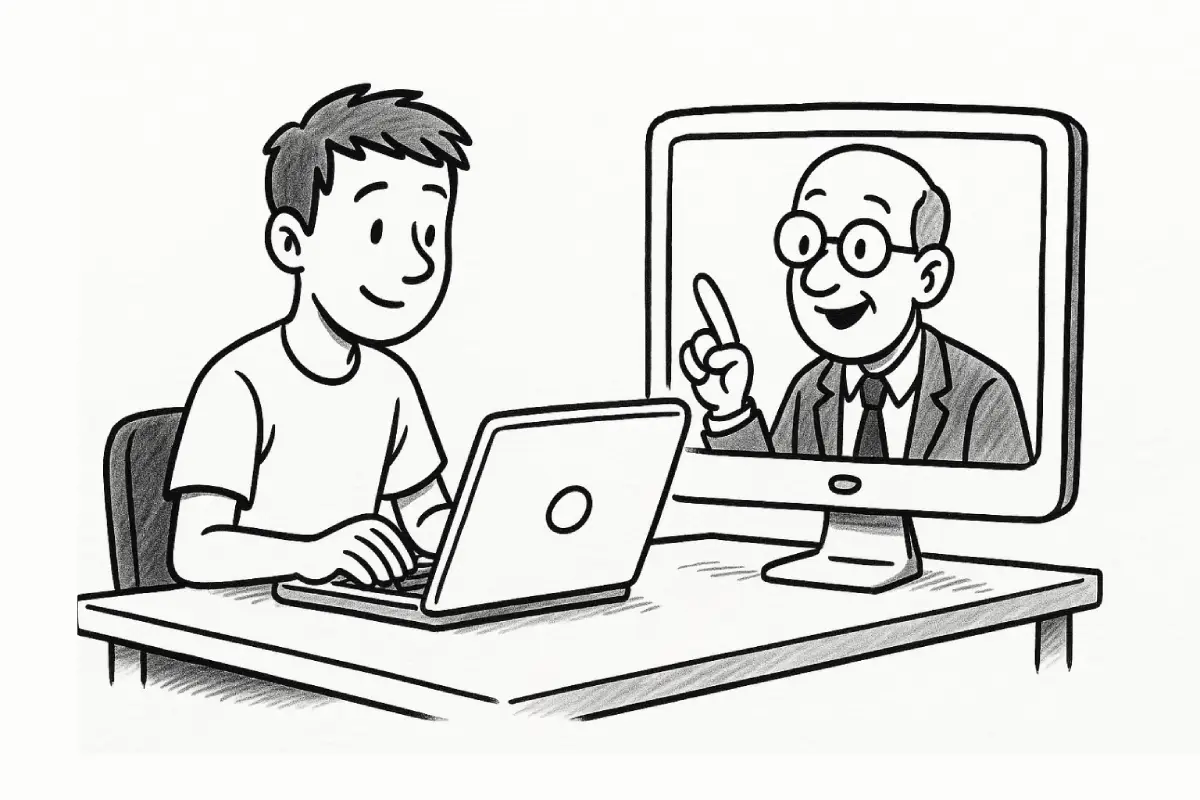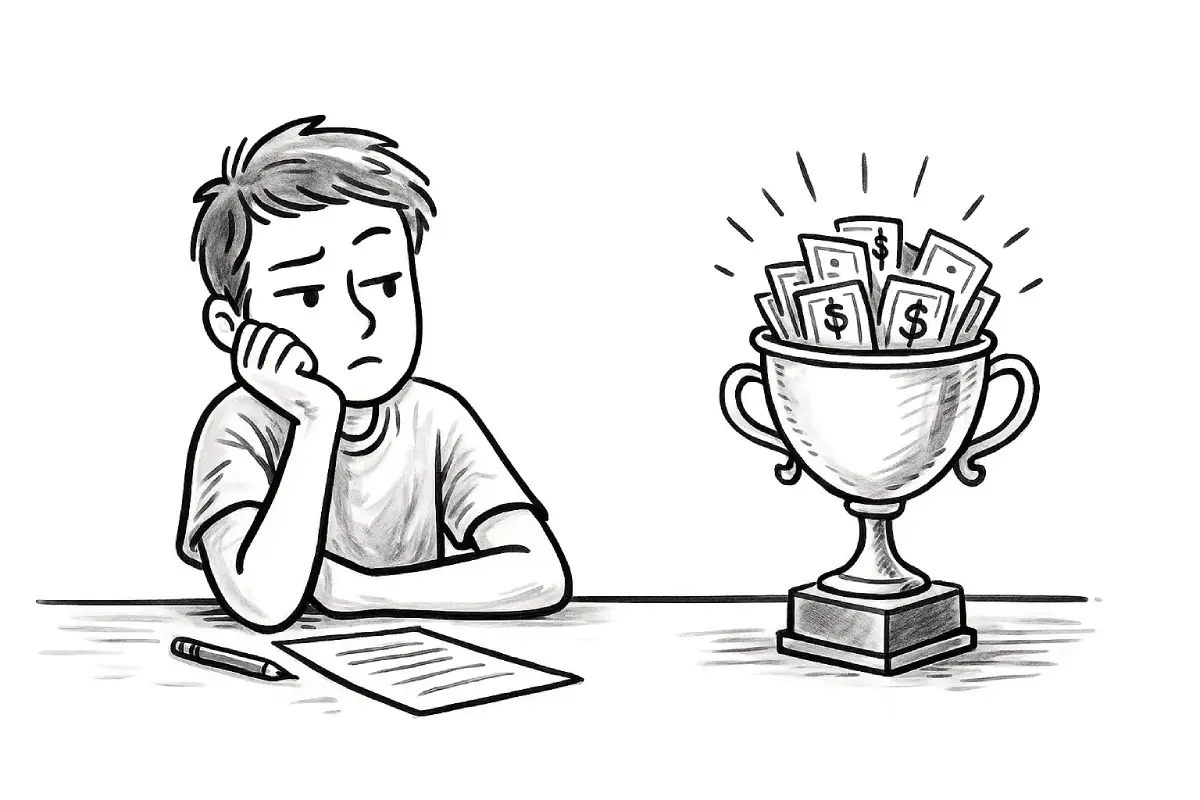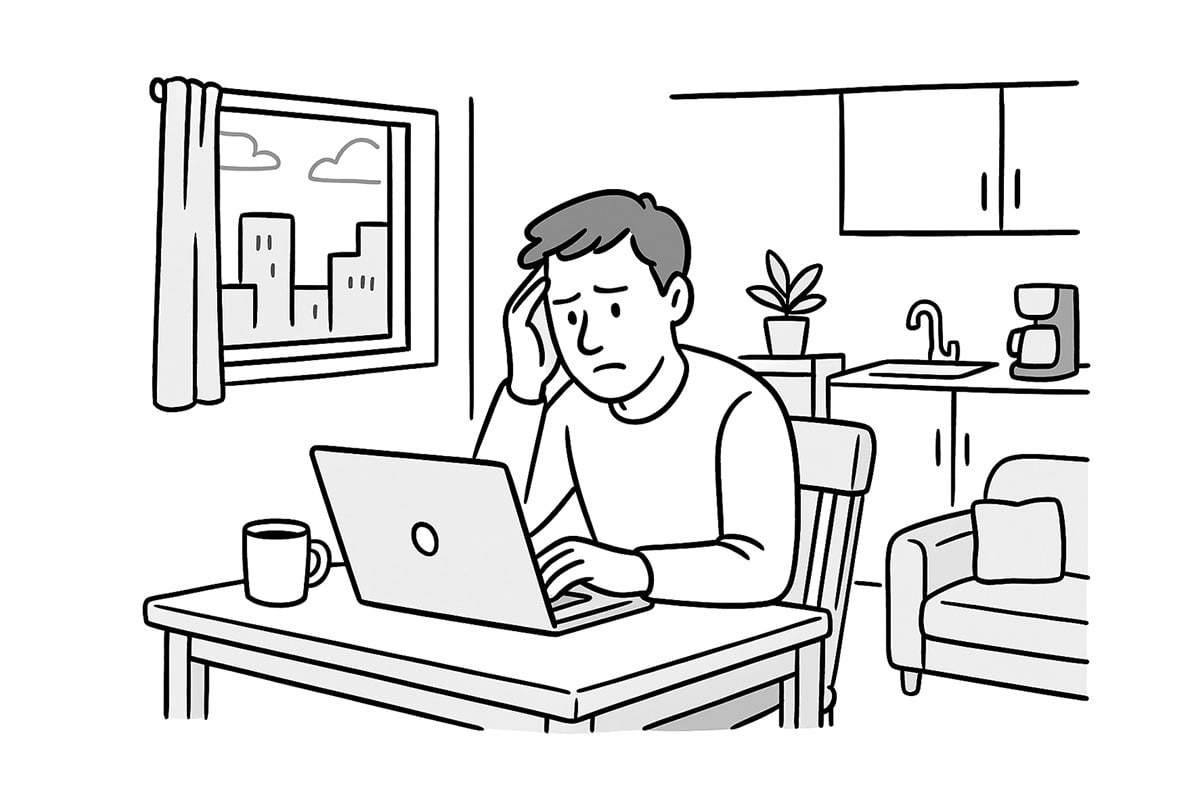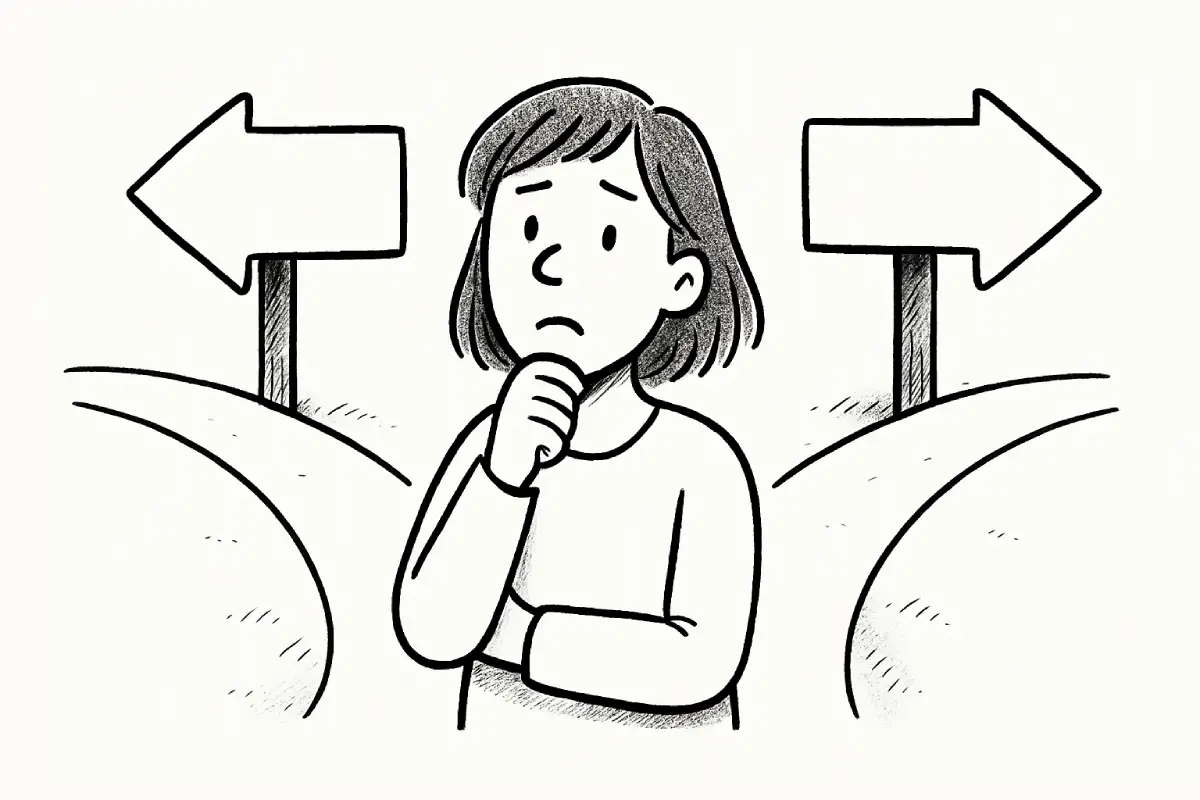The first sound isn’t the alarm. It’s never the alarm. It’s the pre-alarm. The phantom ghost of the alarm, a jolt of pure, unadulterated cortisol that hits my system about three minutes before the digital chirping is scheduled to begin. My body knows. It’s terrified.
So I’m already awake when the phone starts its nonsense. Lying there, staring at the ceiling, I perform the first sacred ritual of the remote worker: calculating the absolute minimum amount of time required to get from this bed to that chair in the other room without anyone on a video call knowing I was horizontal sixty seconds prior. It’s a science. A dark art, really.
My name is Matt, by the way. I work for a company called Jobicy, which is all about the future of work, remote setups, that whole shebang. And my specific gig? I research AI tools. Yeah, I’m the guy who gets to play with the shiny new toys that are supposedly coming for all our jobs. I spend my days poking and prodding at language models, image generators, and “productivity enhancers” that promise to streamline my workflow into a state of corporate nirvana. It’s… interesting. It also makes me deeply, deeply suspicious of anything that claims to be a perfect “routine.”
Because, let’s be honest, most of the “Work From Home Routine” articles you read online are absolute garbage. They’re written by either trust-fund lifestyle bloggers who work two hours a day or, increasingly, by the very AI tools I’m paid to dissect. They all have the same soulless blueprint.
5 AM: Rise and greet the sun with mindful salutations. 5:30 AM: Drink a gallon of lemon water while journaling about my Q3 goals. 6 AM: Cold plunge followed by a kale smoothie that tastes of regret.
It’s a lie. A beautiful, well-lit, Instagram-filtered lie. My routine is less “mindful salutations” and more “stumble to the kitchen and pray we still have coffee.”
The Sacred Bean Juice Ritual
The coffee machine is the true heart of this operation. It’s an old, gurgling beast of a drip machine that probably hates me, but it gets the job done. The process is mechanical, a muscle-memory ballet of scooping grounds and pouring water. This is my meditation. Not sitting on a cushion and thinking about my breath; just the simple, tangible act of preparing the one thing that will make the next few hours survivable. No thoughts, just coffee.
While it brews—and it takes its sweet time—I break the number one rule of every productivity guru on the planet. I grab my phone. I know, I know. I should be “protecting my creative energy” or whatever. But I need to know. Did the world end overnight? Did I get any emails that require immediate panic? It’s a quick, dirty hit of information. A digital triage. Most of the time, it’s nothing. A few newsletters, a Slack notification from a colleague in a different time zone. But the ritual isn’t about the content; it’s about scratching the itch.
Once the coffee is ready—black, no sugar, because I’m not a monster—I finally make the commute. All ten staggering steps from the kitchen to my office, which is also the guest room, which is also where we store the vacuum cleaner. I sit down. The chair groans. The day begins. Sort of.
The first hour is a wash. Let’s just call it what it is. It’s “email apnea.” I hold my breath, dive into the inbox, and try to surface before I drown. Deleting junk, archiving read messages, flagging the things that actually require brainpower. It’s not work, not really. It’s more like clearing the debris off my desk before I can even think about working. It’s the digital equivalent of tidying up. Necessary, but ultimately unfulfilling.
Wrestling with the Ghosts in the Machine
My actual job, the thing that pays the bills, starts around 9 AM. And it’s a weird one. I’m basically in a constant dialogue with algorithms. I feed them prompts, I analyze their outputs, I try to figure out where their seams are. Where does the logic break down? Where does the human-like facade crumble and reveal the cold, hard math underneath?
It’s given me a peculiar perspective on writing and creativity. I see the patterns everywhere. The way most AI models structure an article, for instance, is painfully predictable. You can almost feel the checklist.
- Start with a relatable anecdote.
- State the thesis clearly.
- Provide three to five supporting points, each with a clear subheading.
- Use transitional phrases like “Furthermore,” “In addition,” and “On the other hand.”
- End with a concise summary.
It’s clean. It’s logical. And it has all the personality of a beige wall. The real kicker is that these tools are getting better at hiding their tracks. They’re learning to add a dash of “perplexity” (varied sentence length) and a sprinkle of “burstiness” (unexpected word choices) to better mimic human text. The whole field of AI detection is this bizarre arms race. As a recent Stanford HAI report points out, the models are evolving at an exponential rate, making the line between human and machine-generated content blurrier by the day. We’re building better parrots, essentially.
My job is to spot the parrots. To see the beautiful plumage and recognize that there’s no real thought behind the squawk. It’s just a very, very sophisticated echo.
This makes my own writing process a bit of a mess. I’ve become allergic to predictability. I’ll write a sentence and then immediately delete it because it sounds like something GPT would have come up with. It’s a strange sort of professional hazard. I’m constantly trying to outrun my own research.
So, what does “deep work” look like for me? It’s not a pristine, two-hour block of uninterrupted focus. It’s chaotic. It’s 20 minutes of intense writing, followed by 10 minutes of staring out the window wondering if squirrels have existential crises. It’s putting on a pair of noise-canceling headphones and listening to the same post-rock song on a loop for three hours because it somehow unlocks a different part of my brain. It’s getting up to pace around the room, talking to myself, mapping out an idea on a whiteboard that’s covered in so many old notes it looks like a madman’s diary.
It’s messy. And it’s human. We don’t think in straight lines. Our brains are weird, associative machines that connect the smell of rain to a childhood memory to a sudden solution for a problem at work. You can’t schedule that. You can’t optimize it. You just have to create a space where it might happen and hope for the best.
The Midday Collapse and the Glorious Escape
Lunch is, and I cannot stress this enough, not a “mindful eating experience.” It is a frantic, 15-minute affair that involves whatever leftovers are in the fridge, consumed while scrolling through the news or watching a YouTube video about how to fix a leaky faucet. It’s a pit stop. A refueling. The goal is simply to ingest enough calories to prevent the afternoon crash from being a total catastrophe.
Sometimes, the crash comes anyway.
Around 2 PM, the brain fog rolls in. The screen starts to swim a little. The words stop making sense. This is the moment of truth. Do I power through with more coffee, risking a jittery, unproductive afternoon? Or do I succumb to the siren song of a 20-minute nap? The nap usually wins. I’ve stopped feeling guilty about it. It’s not laziness; it’s a strategic retreat. A system reboot. I’ll set an alarm, collapse on the couch, and enter a state of semi-conscious drooling. And you know what? Most of the time, I wake up with the answer to whatever problem I was banging my head against.
The other saving grace is the dog. He doesn’t care about my deadlines or my AI research. All he knows is that at some point in the afternoon, his bladder is going to explode if I don’t take him outside. This forced break is, frankly, a lifesaver. A ten-minute walk around the block, away from the screens, is the best reset button there is. I get some fresh air. He gets to sniff a particularly interesting patch of grass. We both come back inside slightly more sane.
This whole WFH experiment has really thrown a wrench in the traditional concept of productivity, hasn’t it? For decades, the model was “time in chair equals work done.” But we know that’s not true. Productivity isn’t linear. It’s a series of peaks and valleys. The real challenge of remote work is learning to ride those waves instead of fighting them. Some days you’re on fire, and you get eight hours of work done in three. Other days, you struggle for hours just to write a single email. And that’s okay. As long as the work gets done, who cares if it happened in a perfect, eight-hour block? The data backs this up; studies from places like McKinsey show that flexibility is a massive driver of employee satisfaction and, yes, even productivity. It’s about the output, not the performance of working.
The Slow Fade-Out
How does the workday end? It doesn’t. Not really. There’s no grand finale. No packing up a briefcase and walking out the door. It just… peters out.
Around 5 PM, I’ll start looking at the clock more. I’ll switch from the hard tasks to the easy ones. Cleaning up my desktop. Answering a few non-urgent Slack messages. I’m winding down. But the computer is still there. The work is still there. The temptation to just check one more thing is constant.
This is the dark side of working from home that the lifestyle gurus never mention. The blurring of lines. The “office” is always open. It takes a conscious, deliberate act of will to say, “Okay. That’s enough for today.” I have to physically close the laptop. Sometimes I even put it in a drawer, just to remove the temptation. Out of sight, out of mind. Or at least, less in mind.
The evening is about reclaiming my brain. Cooking dinner, talking to my partner, watching something dumb on TV, reading a book. Anything to wash the digital residue of the day away.
So, that’s it. That’s the routine. It’s not pretty. It’s not optimized. It’s not going to get me on the cover of Forbes. But it’s real. It’s a messy, chaotic, coffee-fueled, dog-interrupted, slightly-anxious dance that somehow results in my work getting done. And I suspect, I really do, that it’s a lot closer to how most of us actually work than those sanitized, AI-generated listicles would have you believe. It’s a human routine for a human being. And for now, that’s good enough for me. Maybe that’s the whole point.
You might also like: The Science of Motivation: Why Rewards Don’t Always Work


